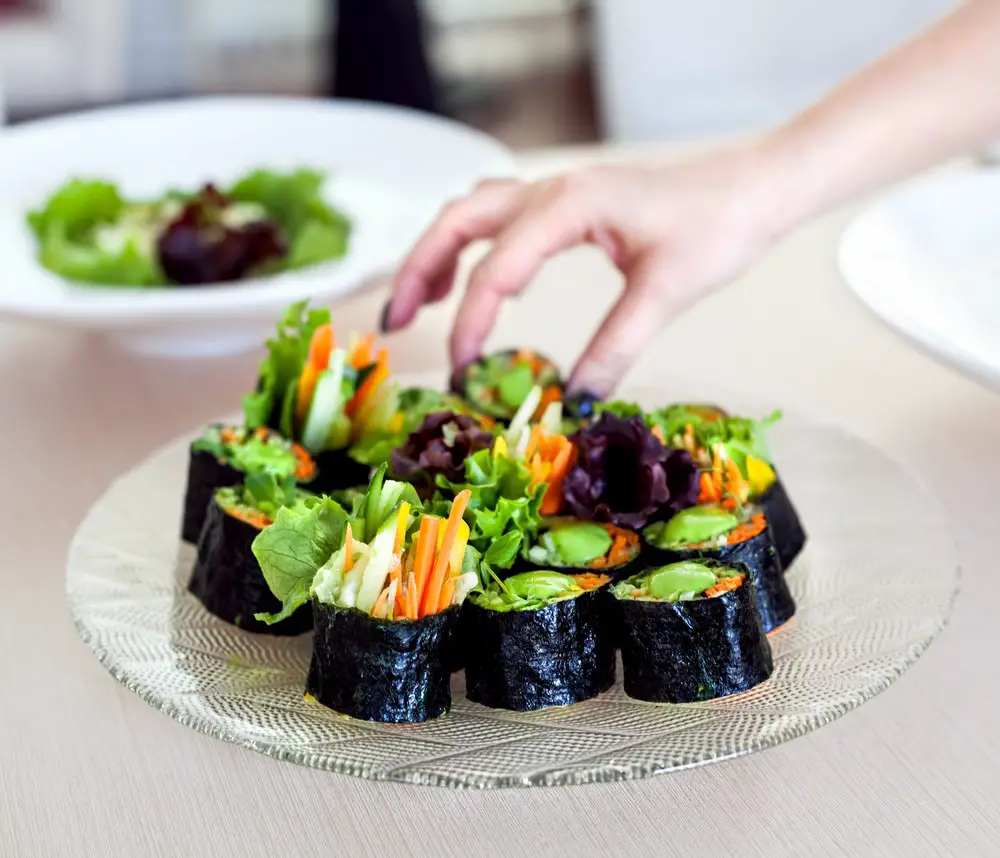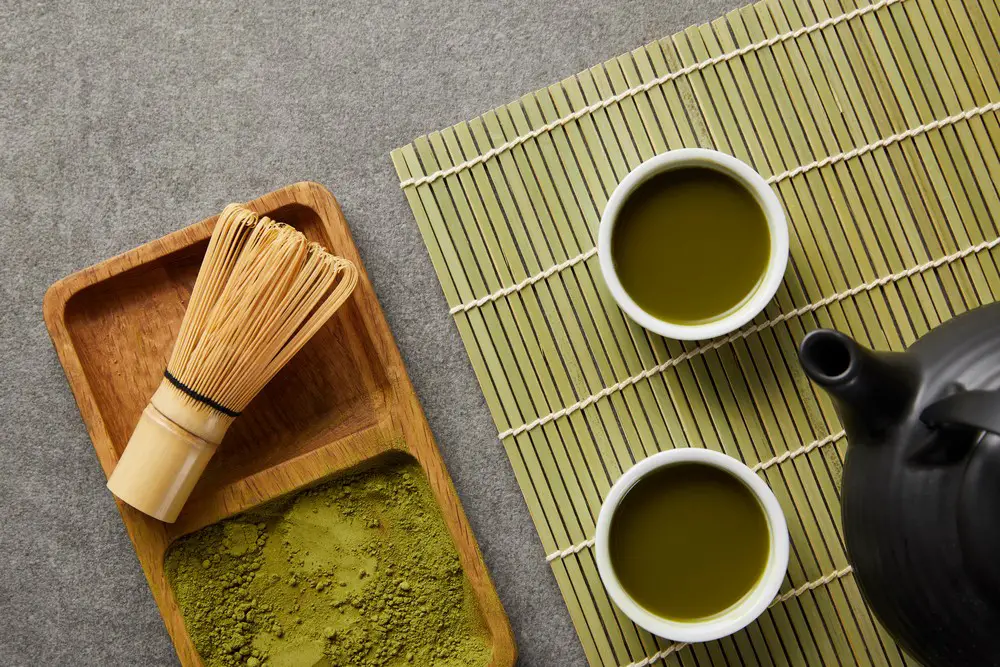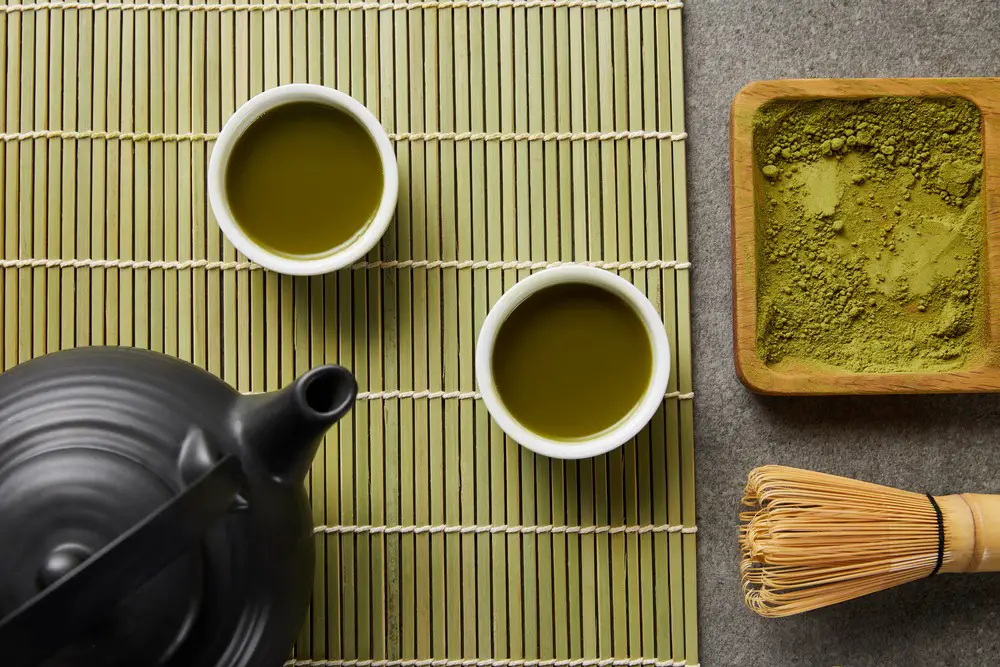If you have enjoyed delicious sweet and sour eel sauce with its thick and sticky texture and its intense depth of umami, you have probably wondered what is eel sauce made of. Eel sauce has become a staple condiment in many Japanese-style restaurants, usually served with unagi (grilled eel) and other dishes like sushi rolls, tempura, and teriyaki.
In Japan, this slightly smoky-flavored condiment called nitsume contains eel extract, mirin, sake, soy sauce, garlic, and ginger. The bones and skin of eels are boiled to extract the eel flavor and then filtered and simmered with the other ingredients to reach the desired consistency.
However, eel sauce in America has evolved to suit the tastes of people there and does not contain eel extract. The name has stuck because it’s a similar sauce to the one that accompanies grilled eel fillet. So, what is eel sauce made of?
Getting the delicious combination of flavors is very easy, and you can even make it at home with soy sauce, mirin, and white sugar. But more of that later. Let’s first take a closer look at Japanese cuisine.

A Look into Japanese Cuisine
Japanese cuisine continues to transform as it absorbs influences from other culinary traditions, but its influences have also traveled far and wide to other countries.
Many foods we consider Japanese today, including beef, tempura, rice, and soy sauce, were introduced to the island nation throughout its history by colonizers, immigrants, and other influences, mainly Chinese and Korean. For example, beef is a relatively new addition to the Japanese diet, having only come there about two hundred years ago. Tempura originates from the Portuguese, who fried fish in a similar batter during their religious fasting days, bringing it to Japan in the 16th century.
Japan’s original inhabitants, the Ainu, were Caucasian. They occupied the island for a significant part of its Neolithic period, between 10,500 to 300 B.C. At the time, the island nation’s population was hunter-gatherers.
As other Asian nations started moving in, they introduced several foods, including rice, which became a Japanese staple. The Japanese prefer white and sticky rice because they respect its flavor and aroma.
No one living in Japan is ever very far from the sea, making fish a staple food in their culture. Because they didn’t want to ruin the flavor of the fish, they preferred eating it raw, with grilling and cooking becoming the following two options. Raw fish cut into paper-thin slices (namasu) has formed part of the Japanese diet.
Sushi’s original form, Nare-Zushi, was a way to cure the fish, ensuring its preservation for several years. Small fish balls were salted and rolled into vinegar-flavored rice. When the time came to eat the preserved fish, the rice was removed and discarded.
Soy Sauce (Shoyu) is another ingredient that came to Japan from China. Even though it first appeared there just a few centuries ago, the Japanese have taken it to another level. For example, it’s fermented to create miso paste, a seasoning used in several dishes, including soup. As one of Japan’s most important seasonings, its commercial manufacture began in the 16th century.
Understanding the rich complexity of Japanese cuisine requires a more profound knowledge of the influences that have helped shape it over time. It also requires a deeper insight into their theory of the five primary flavors. These include salty, sour, sweet, bitter, and umami (a meaty, savory flavor).
Pickling is popular in Japan, but its process of salt fermentation differs from Western pickles, which use vinegar to cure them. In Japanese cuisine, more robust foods always come at the end of a meal. Hence they are never served as a starter, including their strongly flavored miso soup.
Learn more about Japanese staples and how to enjoy them in this article from Wandrium Daily on the story of Japanese sushi.

What Is Eel Sauce Made Of?
Eel sauce or unagi sauce is available in stores. Even though their ingredients differ, most have the same base. The main ingredients include Japanese rice wine (mirin), sake, soy sauce, and sugar. However, it would help if you always read the label because each brand may have different ingredients.
Homemade Eel Sauce
The simple reduction of the main ingredients is easy to make at home. Its high sugar and salt content keeps the sauce well, but you can also freeze it. Add a quarter cup each of mirin and soy sauce into a saucepan. Add two tablespoons each of sake and sugar to the rest of the ingredients.
Whisk over high heat until the mixture comes to a boil. Let it reduce by approximately one-third, testing its consistency. Remember that the eel sauce will thicken as it cools, so don’t over-reduce it. Put a small amount on a plate. Test it with your finger. It should have the same consistency as honey when it reaches room temperature.
When it has cooled down, you can put it into an airtight container and store it for up to two weeks. You can freeze it for up to 3 months.
Some recipes also include cornstarch to help thicken the sauce. Remember that you can also add flavors like fresh ginger or garlic.
Use this idea from the Recipe Critic to make an alcohol-free version of eel sauce.
Useful Tips:
- If the sauce is too thin, you can reduce it for a while.
- If you have over-reduced it, add a little water.
- Use eel sauce to add a depth of flavor to various foods, including deep-fried tofu, steamed rice, grilled vegetables, or with eel fillets as served traditionally.
Final Take
Now that you know what is eel sauce made of and how to enjoy it, either make a batch or buy one of several popular brands. The base ingredients of unagi sauce remain the same, and you can use It to flavor or glaze anything from rice to grilled meals. Eel sauce is the perfect condiment to pair with any dish you want to add a savory umami flavor.
What is eel sauce made of?
Eel sauce usually consists of mirin, sake, soy sauce, and sugar. However, the ingredients may vary from brand to brand, so read all labels carefully before purchasing it.
How do you make eel sauce at home?
To make homemade eel sauce, combine mirin, sake, soy sauce, and sugar in a pan over high heat and let it reduce until it has thickened slightly and reached the consistency of honey when room temperature. You can also add flavors like fresh ginger or garlic for extra flavor.
Is eel sauce vegetarian?
Yes! Traditional Japanese eel sauce is vegan-friendly and contains no animal products. However, you should always read the ingredients label carefully. Some brands may contain fish or other animal byproducts.
Can you freeze eel sauce?
Yes, you can freeze eel sauce for up to three months in an airtight container. It will keep well in the refrigerator for up to two weeks.
What are some dishes that go well with eel sauce?
Eel sauce goes great with various dishes, including deep-fried tofu, steamed rice, grilled vegetables, and even traditional eel fillets. It can be used as a condiment to add flavor and umami goodness to any meal!

